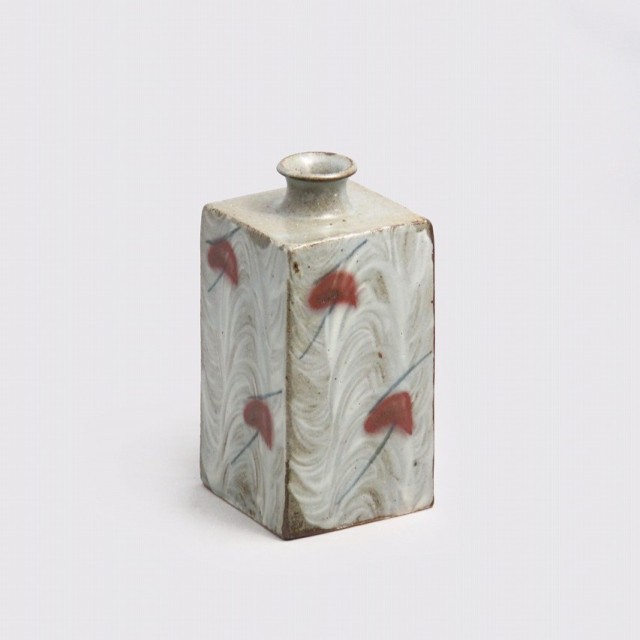
SOLD
with a signed box
Showa - Heisei
living national treasure
D8.5cm×8.5cm H18㎝
The pattern is painted in red and indigo on the brushed surface. The letter “ta” of Tatsuzo is stamped on the base.
Tatsuzo Shimaoka was born in Tokyo in 1919 as the eldest son of a braided cord maker. He later studied under Shoji Hamada. Inspired by his father's braided cords, he developed a unique Jomon inlaying technique in which the braided cords are rolled onto the surface of the vessel to make marks, and the decorative clay is then embedded in the marks. He was recognized as a Living National Treasure for this technique.
Tatsuzō SHIMAOKA(島岡達三)
1919 - 2007
Shimaoka Tatsuzo was a Japanese potter who studied under Shōji Hamada.Later he became the Living National Treasure of Japan. He was best known for his unique Jōmon zogan style of pottery, and was a master of many slip decorating and firing techniques for pottery. He was born in Tokyo in 1919. At 19 years old, he decided he wanted to become a potter, after visiting the Japanese Folk Crafts Museum, which he found very inspiring. In 1946 he began his apprenticeship with the potter Shōji Hamada in Mashiko, Japan. The formal apprenticeship ended in 1949. After working for three years at the Tochigi Prefecture Ceramic Research Center, in 1953 he set up his own pottery next door to his former teacher Shoji. The following year he gave his first exhibition, it was held in Tokyo. 1963 saw the first of his yearly exhibitions in Tokyo's Matsuya Ginza department store. He would later go on to also have yearly exhibitions at Hankyu department store in Osaka. His first American exhibition was held in Boston in 1974, his first European exhibition was at the Museum für Kunst und Gewerbe Hamburg (Museum of Arts and Crafts) in 1977.Over the years Tatsuzō has frequently lectured and taught in the USA and Canada. His work can be found in many museums around the world, some of which are: The Victoria and Albert Museum, Metropolitan Museum of Art and the Israel Museum.
Contact about the Item